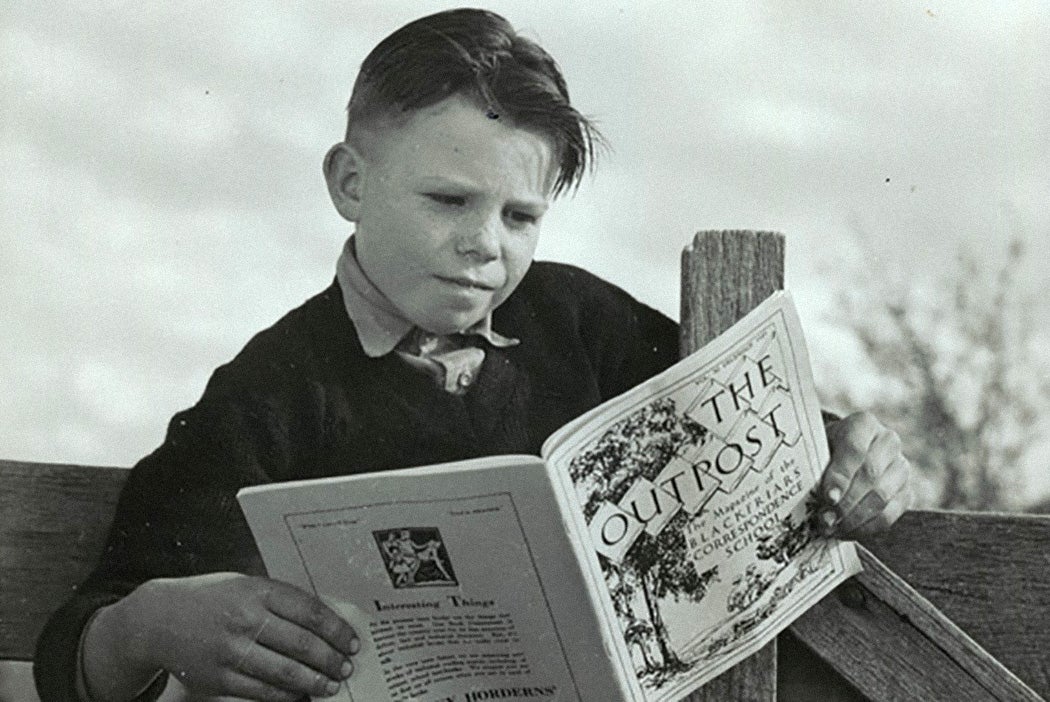These days students, teachers, professors, and parents are figuring out an awful lot about how distance learning works. But teaching and learning remotely is not a brand-new thing. As microbiologist Roy D. Sleator writes, it’s actually much older than Zoom, Google Classroom, or even the internet itself.
Sleator begins the history of distance learning in 1728. That’s when shorthand teacher Caleb Phillips bought an ad in the Boston Gazette promising that students “may by having the several lessons sent weekly to them, be as perfectly instructed as those that live in Boston.”
Despite Phillips’s forward thinking, Sleator writes, correspondence courses didn’t really catch on until the nineteenth century, when improvements to the postal service made them practical. The Pittman Shorthand program, established in Cincinnati in 1852, allowed students to mail in their work and, upon successful completion of the course, receive a certificate of expertise.
While clerical skills might seem like a natural for classes conducted through the mail, would-be secretaries weren’t the only ones to turn to correspondence courses. In 1890, the Colliery School of Mines created a correspondence course on mine safety. Over the three decades that followed, it evolved into the International Correspondence School, which offered courses by mail for iron and railroad workers as well as miners. By 1923, it had 2.5 million students.
But by that time, Sleator writes, mail was losing its place as the dominant method of long-distance communication. Live radio shows allowed educators to talk directly to students at home, even if the broadcast only went one way. By 1923, more than 10 percent of broadcast radio stations were owned by educational institutions.
And then, of course, there was television. By 1934, the University of Iowa was broadcasting televised courses. Other colleges followed suit.
Sleator writes that in the 1960s the Carnegie Foundation funded work by Charles Wedemeyer at the University of Wisconsin–Madison to figure out how to best reach students at a distance. This became the Articulated Instructional Media Project (AIM), which inspired the British Open University, established in 1969. Similar open universities, using radio and TV technologies, popped up in other countries, including Spain and Canada.
Back in the United States in the 1980s, the National Technological University started using satellite TV to deliver a combination of live and recorded course material. It also let students call their instructors by phone and get questions answered on air in real time.
Soon after that came the technology we associate with distance learning today—the World Wide Web. Jones International University, the first completely internet-based higher education institution accredited by the Higher Learning Commission, opened in 1993. It offered five bachelor’s and twenty-four master’s degree programs.
Weekly Newsletter
From there, it wasn’t long until the rise of commercial online learning services like Blackboard and the adoption of “e-learning” across colleges and for some high school students as well.
In the decade since Sleator’s article was published, interest in distance learning has expanded. But that expansion surely pales in comparison with what’s happened just this spring.
Support JSTOR Daily! Join our new membership program on Patreon today.







